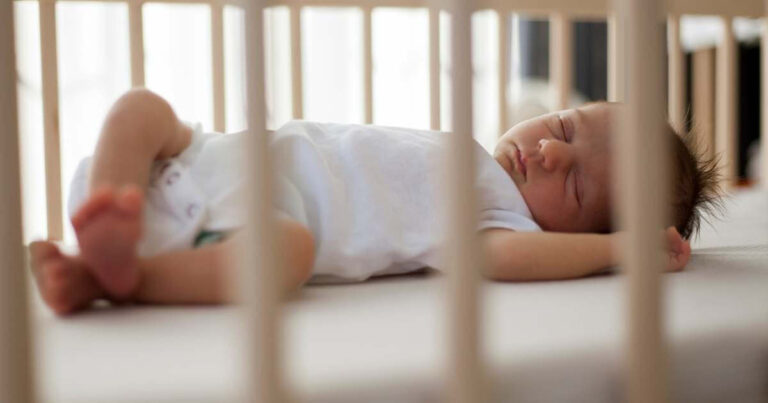When it comes to parenting, there's nothing more precious than ensuring your baby's safety while they sleep. Sleep safety is an issue that affects countless families in the United States. While Sudden Infant Death Syndrome (SIDS) has been a longstanding concern for new parents, accidental suffocation and strangulation during sleep have also remained a persistent problem, causing around a fifth of all unexpected infant deaths, according to the CDC.
Cute but Deadly: Why Crib Bumpers Were Banned and Tips For Safe Sleep Practices
For over 11 years, SafeWise experts have conducted independent research and testing to write unbiased, human reviews (not robots). Learn more.
- The Safe Sleep for Babies Act of 2021 outlawed the manufacture and sale of crib bumpers.
- In August. the CPSC expanded the safeguards to include inclined sleepers.
- The Fisher-Price Rock n' Play was linked to over 100 infant deaths.
- Crib bumpers have been linked to at least 107 infant deaths between 1990 and 2016.
Sign up for our free weekly newsletter to get the best safety news, product info, and deals.
By signing up, you agree to our Terms and Conditions and Privacy Policy.
The impact of safe sleep campaigns
Over the years, public health campaigns have aimed to educate parents on safe sleep practices. One of the most successful initiatives was the "Safe to Sleep" campaign, launched in the mid-1990s by the National Institute of Child Health and Human Development. This campaign encouraged parents to place infants on their backs to sleep, leading to a 40% reduction in unexpected infant deaths from 1990 levels.
However, despite these efforts, the decline in accidental suffocation and strangulation rates has plateaued. This plateau is partly due to contradictory media and social media messages. Many parents are influenced by images of infants sleeping peacefully with plush toys and blankets, unaware of the possible risks associated with these items.
The danger of crib bumpers
One dangerous item often found in cribs is crib bumpers. These padded accessories, once believed to prevent head injuries and getting stuck between crib slats, are now prohibited from being sold. Crib bumpers pose severe risks to infants as they can lead to suffocation, strangulation, and an increased risk of Sudden Infant Death Syndrome (SIDS).
While some may consider breathable alternatives, experts, including the American Academy of Pediatrics (AAP), discourage their use. Regardless of breathability, any soft materials can pose suffocation and strangulation risks. Instead, experts recommend ensuring that cribs have slats no more than 2 3/8 inches apart to keep a baby's head from getting trapped.
Making progress through legislation
To address the dangers of crib bumpers, Senator Tammy Duckworth, a mom of two, played a pivotal role in getting crib bumpers banned nationally. In 2021, President Joe Biden signed the Safe Sleep for Babies Act into law, prohibiting the manufacturing, importation, and sale of crib bumpers. This landmark legislation provides clarity for parents and caregivers about what is safe for infants, helping to eliminate mixed messages.
In August, the CPSC (Consumer Product Safety Commission) strengthened the safeguards outlined in the agency's 2022 Infant Sleep Products Rule¹. This action involves the implementation of two new rules in accordance with the Safe Sleep for Babies Act. Under these rules, “both crib bumpers, a product category associated with no fewer than 107 infant fatalities occurring between 1990 and 2016 alone, and inclined infant sleepers designed like the recalled Fisher-Price Rock n' Play, which was connected to over 100 infant deaths, will be prohibited.”²,³
Creating a safe sleep environment
While banning crib bumpers is a significant step forward, there are other essential guidelines to follow to ensure your baby's safety during sleep:
- Place on back to sleep: Always place your baby on their back to sleep.
- Use a firm surface: Ensure your baby sleeps on a firm, flat surface in their bassinet or crib.
- Ensure a tight-fitting mattress: Make sure the crib mattress fits tightly within the crib, leaving no gaps between the bedding and the crib side.
- Keep it empty: Remove loose blankets, pillows, stuffed toys, or any soft items from the crib.
- Avoid inclined sleepers: Don't let babies sleep in swings, car seats, or with a crib wedge.
- Use up-to-date cribs: Use cribs manufactured after June 2011, complying with safety standards.
Seek guidance from your child's healthcare provider on sleep safety and recommended products, as there can still be dangers lurking in the market.
In conclusion, protecting your baby's sleep is of utmost importance. By adhering to safe sleep practices, understanding the dangers of crib bumpers, and supporting legislative efforts like the Safe Sleep for Babies Act, we can all work together to ensure every baby has a safe and peaceful night's sleep. After all, every parent's most significant title is their child's protector.
Sources
- Consumer Product Safety Commission, “CPSC’s New Federal Infant Sleep Products Safety Standard Takes Effect.” June 2022. Accessed September 27, 2023.
- Consumer Product Safety Commission, “CPSC Staff Response to the Record of Commission Action on Crib Bumpers.” Sept. 2016. Accessed September 27, 2023.
- Consumer Product Safety Commission, “Fisher-Price Reannounces Recall of 4.7 Million Rock ‘n Play Sleepers; At Least Eight Deaths Occurred After Recall.” Jan. 2023, Accessed September 27, 2023.
Recent Articles




